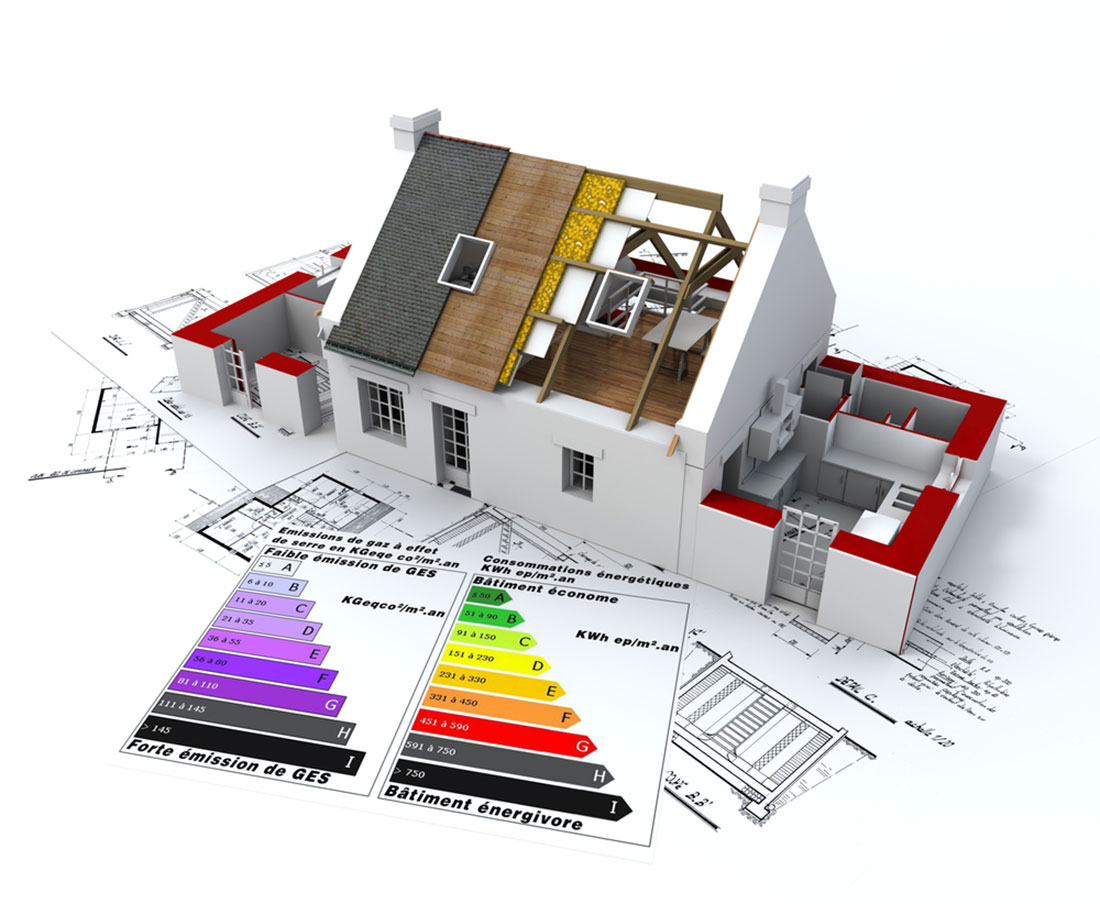What is ULTRA Energy-Efficient Home Design?

-
Ultra-efficient home design combines multiple strategies from architectural design to the installation of highly-efficient appliances and renewable energy systems.
We’ve written about energy-efficient home design before – about how thoughtful architectural design and planning for energy-efficient appliances in your custom house plan can reduce your impact on the environment.
Now, we’re taking a step back to look at the big picture. When you put all these strategies together, what you get is called ultra-efficient home design. And if you’re really serious about it, it’s not a futuristic idea to have a home that produces as much energy as it consumes.
It's now.
The Whole-House Systems Approach
Modern houses are not only designed for appearance (architectural style) and function (number, size, and purpose of rooms). With energy costs rising along with public understanding of how the source of much of that energy is non-renewable, custom home builders now regard homes as an energy system.
Like a car or any machine, a home is an energy system with interdependent parts, each of which affects the performance of the entire system.
The Body and Climate
Goals: Low U-factor windows, High R-factor insulation
All parts of the whole-house system need sufficient protection to work properly. That’s why it’s so important to invest in a robust “body” – an exterior that holds up to the elements.
Whether the “system” is working in a very hot or very cold climate, well-sealed windows and skylights (with a low U-factor) and good insulation (with a high R-value) are obvious components. But in ultra energy-efficient home design, you might take adaptation to the climate a step further.
- Cool roofs, for example, use highly reflective materials to reflect more light and absorb less heat from sunlight to maintain cooler temperatures inside the house in hotter climates.
- Passive solar techniques (such as positioning the home to collect sunlight through south-facing windows) reduce the need to produce heat mechanically in colder climates.
These steps improve the functioning of other home system components inside the house.
Airflow and Heating/Cooling
Goal: High SEER (Seasonal Energy Efficiency Ratio) rating
Of course, a healthy system needs to breathe properly. That’s where components that allow for ventilation and direct hot or cool airflow come into play.
Ultra-efficient ventilation involves maximizing airflow where it’s needed and sealing it off where it’s wasteful. The more unforgiving the climate, the more sensitive this component needs to be to the threats of moisture, allergens, heat loss and heat buildup.
Energy recovery ventilation systems are among the most efficient. In the winter, they transfer heat from the warm inside air to the supply air (usually heated by the furnace), reducing the energy needed. In the summer, they do the opposite, using the cooler inside air to cool the supply air.
Alternatively, as we’ve written about before, some places like our own South Carolina Lowcountry have mild climates with steady breezes that are ideal for natural ventilation for much of the year.
Water Heating
Goal: High EF (energy factor)
Heating water generally accounts for about 18 percent of your home’s energy use. So an ultra energy-efficient home has a highly efficient water heater as an essential component.
When selecting a water heater, look for a high energy factor (EF). This is determined by measuring:
- Recovery Efficiency – how efficiently heat from the fuel (electricity, gas, geothermal, etc.) is transferred to the water
- Standby Losses – how fast stored water loses heat
- Cycling Losses – how much heat is lost as the water circulates through the tank and pipes
Among the highest EF water heaters are the heat pump type. These are 2-3 times more energy efficient than a regular “storage” water heater (one that heats, then stores hot water in the tank).
That doesn’t necessarily mean a heat pump water heater is the best option for you. This guide will help you determine the features you want – and just how “ultra” you want your home efficiency to be.
Appliances and Electronics
Goal: High Energy Star rating
The whole-house approach wouldn’t be complete without paying special attention to those components you interact with every day. Your home may have a robust exterior, strictly controlled airflow and highly efficient water heating components; but if it lacks an approach to control electricity consumption, you won’t get anywhere near an ultra-efficient home standard.
Just think about it. The flow of electricity in your home is constant:
- Kitchen appliances (oven, refrigerator, microwave)
- Laundry appliances (washer, dryer, iron)
- Electronics (televisions, computers, cell phones, video game consoles)
- Plug-in Tools (vacuum cleaner, power tools, electric mowers and garden tools)
That’s why the EPA has identified the reduction in electricity usage as one of the most important factors in reducing environmental impact.
Check out our post on minimizing your environmental impact for ideas on how to work toward making this component of your whole-house system ultra-efficient.
BUILDING A CUSTOM HOME? PLAN FOR ULTRA ENERGY-EFFICIENT HOME DESIGN
Not every home builder understands all that’s involved in making a home as energy efficient as possible. Of course, not every homebuyer thinks to ask their contractor to make this a priority.
We know from experience that every custom build has to reflect the values – and the dreams – of each individual homebuyer. At ALS Construction, if you tell us making your home as energy-efficient as possible is a top priority for you, that’s what you’ll get.
Contact us to learn more about the latest advancements in whole-house systems technologies and building techniques – and how we’re going to apply them to your new home.



